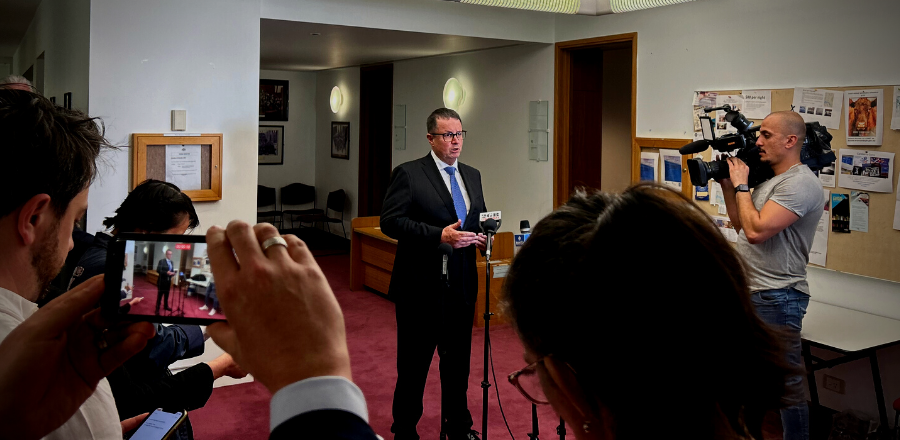Hospital funding flaws exposed deep in budget papers
The AMA is alarmed at details in the budget showing public hospital funding to the states and territories is forecast to be $2.4 billion less than forecast in May 2023 and has called for a genuine ‘health budget’ in May 2023.

The AMA is alarmed at details in the budget showing public hospital funding to the states and territories is forecast to be $2.4 billion less than forecast in May 2023 and has called for a genuine ‘health budget’ in May 2023.
Fine-tooth combing of the October budget papers revealed the down-graded forecast of hospital funding due to an apparent reduction in the volume of hospital services forecast by states and territories.
AMA President Professor Steve Robson said he was stunned by the forecast which were described in News Corp papers as “savage” and “hidden deep in the federal budget papers”. It detailed the funding cut at $755.4 million in 2022–23 and totalling $2.4 billion over the four years to 2025–26.
Professor Robson found the states’ reduced forecast on hospital services demand confounding with hospitals at capacity, ambulances ramped outside over-full emergency departments and years-long waiting lists for elective surgery.
He said the reason behind the reduced forecast for hospital services was because states and territories didn’t have the ability to expand hospital capacity due to lack of staff and beds.
“States and territories can’t expand to meet community demand because the current funding model is broken with the overall investment from both the states/territories and the Commonwealth falling short of what is needed.”
Professor Robson said the current funding model, combined with the 6.5 per cent cap on funding growth, means patients will continue to suffer as inflation increases, eating into the Commonwealth’s funding for growth.
“Now we know the COVID-19 50-50 hospital funding will end in December, the situation will only worsen, at a time when, if we look at what is happening internationally, we are likely to see another spike in COVID-19 cases.”
The AMA welcomed the election commitments made good in the budget including the $980 million committed for general practice, but warned with the health system under so much pressure, the May 2023 budget must be put health front and centre.
“The government has set aside $750 million for its Strengthening Medicare Fund to support the recommendations of the Strengthening Medicare Taskforce, which are due by the end of this year,” Professor Robson said.
“We are pleased to see that the government is planning to move quickly to roll out $229.7 million in GP infrastructure grants of up to $50,000 each, which will support general practices to enhance digital capability, invest in infection control and meet accreditation standards.”
At a post-budget press conference, Professor Robson welcomed the government’s $143.3 million commitment to support access to healthcare in rural and regional areas but noted it was a down payment.
“We're certainly seeing a good start in regional healthcare, but it's very much a down payment. Australians in regional and rural communities want to see a real injection of resources so they can get the healthcare, the doctors, the psychologists they need.”
Professor Robson’s comments were carried in many outlets’ budget analysis including Channel 7 Sunrise and in analysis in The Australian newspaper. He said the federal government missed the opportunity to address chronic disease through the AMA’s proposed sugar tax, or any other preventative health initiatives.
Some positives in the budget were extra money for Aboriginal and Torres Strait Islander peoples’ health, funding to begin scoping a Centre for Disease Control, a National Health and Climate Strategy and the establishment of a National Health Sustainability and Climate Unit.
However, Professor Robson told ABC real reform would be needed in next year's budget to address hospital overcrowding and surgery delays.
“Last night’s budget doesn't solve persistent pressures on the health sector and now is the time the government needs to work out how they're going to end the logjam in our hospitals and make general practice more accessible.”



